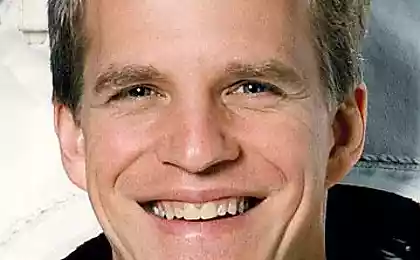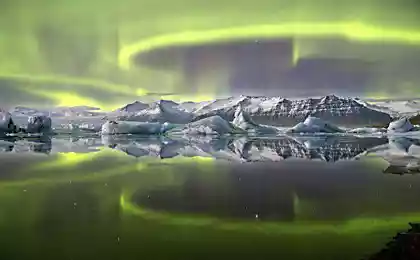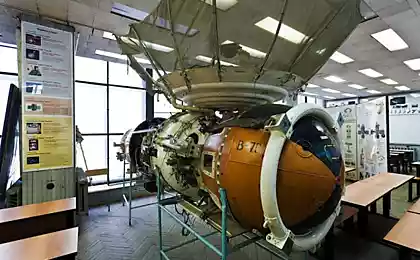764
Far space
Another portion krasivostej universe.
There will be many photos, I will inform you at the end.

Separate Nebula
Beautiful triple nebula NGC 6514 in the constellation of Sagittarius. The name of the nebula suggested by William Herschel and means' divided into three lobes. " The exact distance to it is unknown, but estimates range from 2 to 9000 light years. NGC 6514 is just three basic types of nebulae - Emission (pink color), reflecting (blue) and absorbing (black color).

The cosmic elephant's trunk
Elephant Trunk Nebula winds through the emission nebula and young star cluster complex IC 1396 in the constellation Cepheus. Cosmic elephant's trunk is over 20 light-years. These dark clouds, like the mustache, contain material for star formation and hide protostars - stars in the final stages of its formation - the layers of cosmic dust.

World-ring
Hoag's Object - a strange ring-shaped galaxy in the constellation Serpens, named after otkryvatelya.Rasstoyanie to Earth is about 600 million light years. In the center of the galaxy is a cluster of relatively older stars are yellow. It is surrounded by almost right ring of stars younger, with blue tint. The diameter of the galaxy - about 100 thousand. Light years. Among the hypotheses about the origin of the collisions of galaxies that happened billions of years ago.

Cone Nebula
About Cone Nebula can be seen strange formations. They arise from the interaction of interstellar dust and gas, with the light coming from young stars. The blue glow around the star S Mon - is a reflection of the ambient light of a bright star stardust. The star S Mon is located in the scattered star cluster NGC 2264, located at a distance of 2500 light years from Earth.

The spiral galaxy NGC 3370 lies about 100 million light-years away in the constellation Leo. The size and structure it is close to our own Milky Way.

The Lagoon Nebula
It is a giant interstellar cloud and H II region in the constellation Sagittarius. Located at a distance of 5,200 light years, the Lagoon Nebula is one of the two nebulae zvezdoformiruyuschih poorly distinguishable to the naked eye in the middle latitudes of the Northern Hemisphere. Not far from the center of the lagoon is a bright area "hourglass" - the result of the turbulent interaction of stellar winds and powerful radiation.

The luminous band in the Pelican Nebula
Well visible in the sky, the luminous band IC 5067 is part of a large emission nebula with a characteristic shape of the Pelican. The length of the strip - about 10 light-years, it outlines the head and neck of the cosmic pelican. Located at a distance of about 2000 light years from us.

Three bright nebula in Sagittarius
The Lagoon Nebula M8 to the left of the image center, M20 - colored nebula on the right. Third Nebula, NGC 6559, is located just above the M8 and separated from it by a dark stripe stardust. All of them are at a distance of about 5000 light years from us.

Galaxy NGC 5195: the question mark
Dwarf galaxy NGC 5195 in the constellation Canes Dogs is well known as a small companion spiral galaxy M51 - Whirlpool Galaxy. Together they look like a cosmic question mark, which is the point of NGC 5195. Located at a distance of about 30 million light years from Earth

Amazing crab expanding
This Crab Nebula, located at a distance from us 6500 light years away in the constellation Taurus - supernova remnant, an expanding cloud of material left over after the explosion, a huge star. Currently, the size of the nebula - about 10 light years and is expanding at a rate of about 1000 km / s.
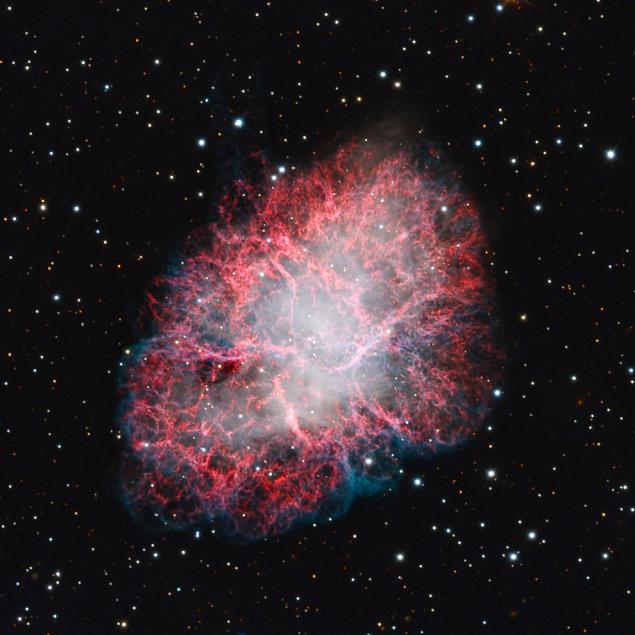
Variable Star RS Pup
This is - one of the most important stars in the sky. One of causality, it happens to be surrounded by the dazzling reflection nebula. The brightest star in the center - a throbbing RS Pup. It is almost 10 times more massive than the Sun, 200 times larger, and its brightness is an average 15 000 times more solar, and changes the brightness of RS Pup is almost five times every 41 days 4. RS Pup is located at a distance of about a quarter of the way between the Sun and the center of the Milky Way at a distance of 6500 St. years from Earth.

Ocean planet Gliese 1214b
The exoplanet (sverhzemlya) in the constellation Ophiuchus. First discovered ocean planet, it revolves around a dim red dwarf star GJ 1214. The planet is close enough to the Earth (13 parsecs, or about 40 light-years), and as the transits across the disk of its star, its atmosphere can be studied in detail using current technologies . One year on this planet lasts 36 hours.
The atmosphere of the planet consists of a thick water vapor with small amounts of hydrogen and helium. However, given the high temperature on the surface of the planet (about 200 degrees Celsius), scientists believe that the water on the planet is in such exotic states as "hot ice" and "superfluid water ', which are not found on Earth.
Age planetary system is estimated at several billion years. The mass of the planet is about 6, 55 Earth masses, while at the same time, exceeds the diameter of the planet Earth more than 2, 5 times. This picture shows how the artist imagines passing sverhzemli Gliese 1214b on the disk of its star.

Stardust in South Corona
There are visible cloud of cosmic dust, which are on the star field near the border of the constellation Corona Australis. They are located at a distance of less than 500 light-years away and block the light from the more distant stars the Milky Way galaxy. In the center of the image are several reflection nebulae.

Galaxy Cluster Abell 1689
Abell 1689 - a cluster of galaxies in the constellation Virgo. This is one of the biggest and most massive known galaxy clusters is a gravitational lens, distorting the light of galaxies that lie behind it. The cluster is located at a distance of 2.2 billion light years (670 Mpc) from Earth
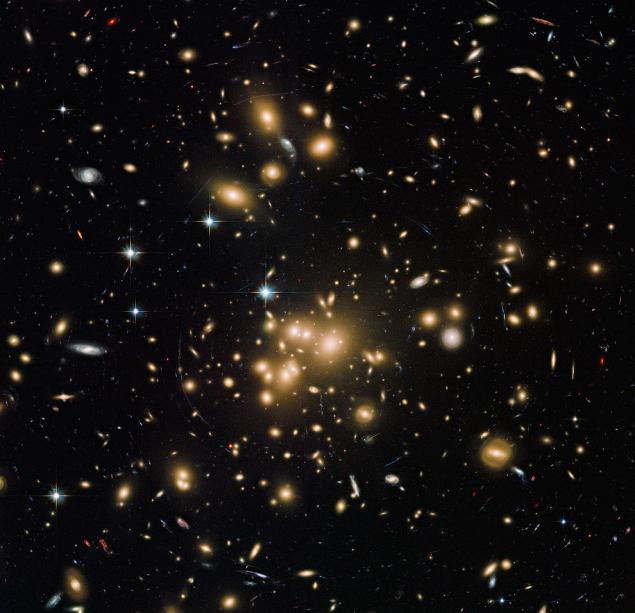
Pleiades
Open cluster in the constellation Taurus, sometimes referred to as the "Seven Sisters"; one of the closest to Earth and is one of the most visible to the naked eye star cluster. Perhaps this is the most famous star cluster in the sky. The Pleiades star cluster is about 12 light years in diameter and contains about 1000 stars. The total mass of stars in the cluster is estimated at approximately 800 mass of our sun.

Nebula Shrimp
At sub-of Antares, in the tail of the nebula-rich constellation Scorpius, is an emission nebula IC 4628. Hot massive stars whose age is only a few million years, light nebula invisible ultraviolet light. Astronomers call this cosmic cloud nebula Shrimp.
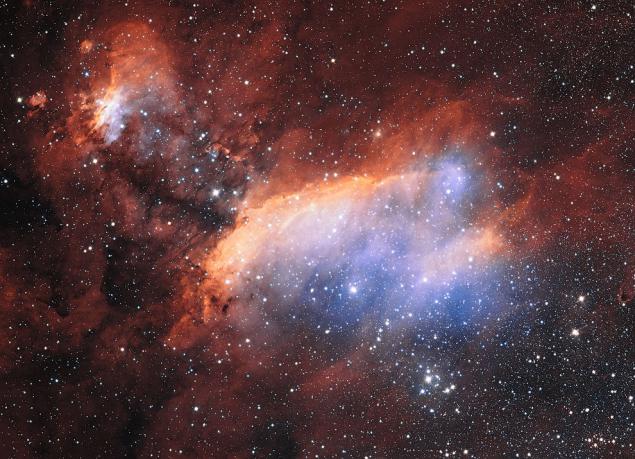
Galaxy M81 and M82 in the constellation Ursa Major.

Barred spiral galaxy (type SBc) NGC 253 in the constellation Sculptor. Located about 8 million light-years from Earth. In 1999, the space telescope "Chandra" X-ray found an unusual concentration of X-ray sources near the center of NGC 253. Four of these sources, tens of thousands of times more massive than the Sun, located in the 3 thousand light years from the galaxy's core. These black holes are shifted under the influence of gravity to the center of the galaxy, in the future can come together into one supermassive black hole.
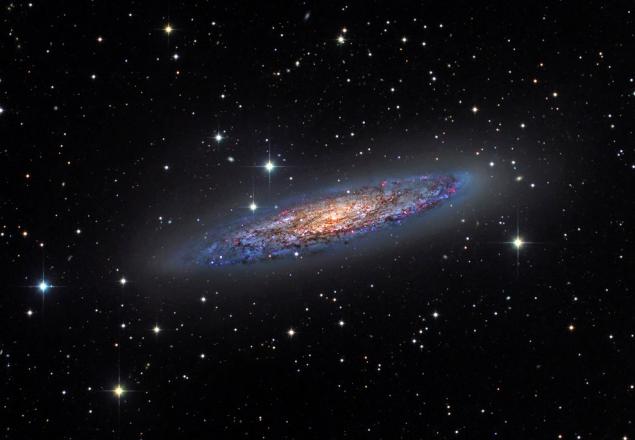
Globular cluster Omega Centauri. It is located at a distance of 18,300 light-years away.

Multicolored clouds Rho Ophiuchi - a binary star in the constellation Ophiuchus. The red supergiant Antares - one of the brightest stars in the night sky - lights up the yellow-red clouds on the upper left corner of the image. Rho Ophiuchi is located in the center of the blue nebula on the right. The distant globular cluster M4 visible just under the Antares.

These structures appear to be unchanging and eternal in human terms, but their life is fleeting across the universe. Just a few thousand years of hard radiation from the stars in the nebula, change the appearance of the structure beyond recognition.
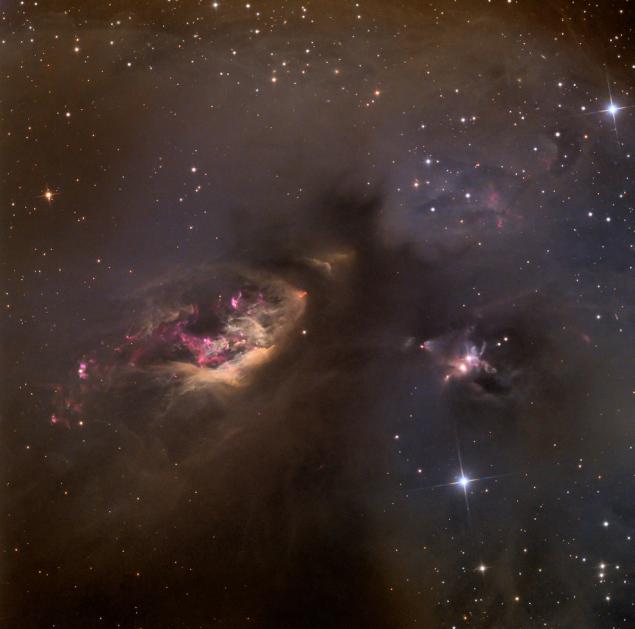
Trapezium open cluster.

Unfortunately, many photos do not fit into the size limit, so that the finish will come sooner than I expected.
Hence

Source:
There will be many photos, I will inform you at the end.

Separate Nebula
Beautiful triple nebula NGC 6514 in the constellation of Sagittarius. The name of the nebula suggested by William Herschel and means' divided into three lobes. " The exact distance to it is unknown, but estimates range from 2 to 9000 light years. NGC 6514 is just three basic types of nebulae - Emission (pink color), reflecting (blue) and absorbing (black color).

The cosmic elephant's trunk
Elephant Trunk Nebula winds through the emission nebula and young star cluster complex IC 1396 in the constellation Cepheus. Cosmic elephant's trunk is over 20 light-years. These dark clouds, like the mustache, contain material for star formation and hide protostars - stars in the final stages of its formation - the layers of cosmic dust.

World-ring
Hoag's Object - a strange ring-shaped galaxy in the constellation Serpens, named after otkryvatelya.Rasstoyanie to Earth is about 600 million light years. In the center of the galaxy is a cluster of relatively older stars are yellow. It is surrounded by almost right ring of stars younger, with blue tint. The diameter of the galaxy - about 100 thousand. Light years. Among the hypotheses about the origin of the collisions of galaxies that happened billions of years ago.

Cone Nebula
About Cone Nebula can be seen strange formations. They arise from the interaction of interstellar dust and gas, with the light coming from young stars. The blue glow around the star S Mon - is a reflection of the ambient light of a bright star stardust. The star S Mon is located in the scattered star cluster NGC 2264, located at a distance of 2500 light years from Earth.

The spiral galaxy NGC 3370 lies about 100 million light-years away in the constellation Leo. The size and structure it is close to our own Milky Way.

The Lagoon Nebula
It is a giant interstellar cloud and H II region in the constellation Sagittarius. Located at a distance of 5,200 light years, the Lagoon Nebula is one of the two nebulae zvezdoformiruyuschih poorly distinguishable to the naked eye in the middle latitudes of the Northern Hemisphere. Not far from the center of the lagoon is a bright area "hourglass" - the result of the turbulent interaction of stellar winds and powerful radiation.

The luminous band in the Pelican Nebula
Well visible in the sky, the luminous band IC 5067 is part of a large emission nebula with a characteristic shape of the Pelican. The length of the strip - about 10 light-years, it outlines the head and neck of the cosmic pelican. Located at a distance of about 2000 light years from us.

Three bright nebula in Sagittarius
The Lagoon Nebula M8 to the left of the image center, M20 - colored nebula on the right. Third Nebula, NGC 6559, is located just above the M8 and separated from it by a dark stripe stardust. All of them are at a distance of about 5000 light years from us.

Galaxy NGC 5195: the question mark
Dwarf galaxy NGC 5195 in the constellation Canes Dogs is well known as a small companion spiral galaxy M51 - Whirlpool Galaxy. Together they look like a cosmic question mark, which is the point of NGC 5195. Located at a distance of about 30 million light years from Earth

Amazing crab expanding
This Crab Nebula, located at a distance from us 6500 light years away in the constellation Taurus - supernova remnant, an expanding cloud of material left over after the explosion, a huge star. Currently, the size of the nebula - about 10 light years and is expanding at a rate of about 1000 km / s.

Variable Star RS Pup
This is - one of the most important stars in the sky. One of causality, it happens to be surrounded by the dazzling reflection nebula. The brightest star in the center - a throbbing RS Pup. It is almost 10 times more massive than the Sun, 200 times larger, and its brightness is an average 15 000 times more solar, and changes the brightness of RS Pup is almost five times every 41 days 4. RS Pup is located at a distance of about a quarter of the way between the Sun and the center of the Milky Way at a distance of 6500 St. years from Earth.

Ocean planet Gliese 1214b
The exoplanet (sverhzemlya) in the constellation Ophiuchus. First discovered ocean planet, it revolves around a dim red dwarf star GJ 1214. The planet is close enough to the Earth (13 parsecs, or about 40 light-years), and as the transits across the disk of its star, its atmosphere can be studied in detail using current technologies . One year on this planet lasts 36 hours.
The atmosphere of the planet consists of a thick water vapor with small amounts of hydrogen and helium. However, given the high temperature on the surface of the planet (about 200 degrees Celsius), scientists believe that the water on the planet is in such exotic states as "hot ice" and "superfluid water ', which are not found on Earth.
Age planetary system is estimated at several billion years. The mass of the planet is about 6, 55 Earth masses, while at the same time, exceeds the diameter of the planet Earth more than 2, 5 times. This picture shows how the artist imagines passing sverhzemli Gliese 1214b on the disk of its star.

Stardust in South Corona
There are visible cloud of cosmic dust, which are on the star field near the border of the constellation Corona Australis. They are located at a distance of less than 500 light-years away and block the light from the more distant stars the Milky Way galaxy. In the center of the image are several reflection nebulae.

Galaxy Cluster Abell 1689
Abell 1689 - a cluster of galaxies in the constellation Virgo. This is one of the biggest and most massive known galaxy clusters is a gravitational lens, distorting the light of galaxies that lie behind it. The cluster is located at a distance of 2.2 billion light years (670 Mpc) from Earth

Pleiades
Open cluster in the constellation Taurus, sometimes referred to as the "Seven Sisters"; one of the closest to Earth and is one of the most visible to the naked eye star cluster. Perhaps this is the most famous star cluster in the sky. The Pleiades star cluster is about 12 light years in diameter and contains about 1000 stars. The total mass of stars in the cluster is estimated at approximately 800 mass of our sun.

Nebula Shrimp
At sub-of Antares, in the tail of the nebula-rich constellation Scorpius, is an emission nebula IC 4628. Hot massive stars whose age is only a few million years, light nebula invisible ultraviolet light. Astronomers call this cosmic cloud nebula Shrimp.

Galaxy M81 and M82 in the constellation Ursa Major.

Barred spiral galaxy (type SBc) NGC 253 in the constellation Sculptor. Located about 8 million light-years from Earth. In 1999, the space telescope "Chandra" X-ray found an unusual concentration of X-ray sources near the center of NGC 253. Four of these sources, tens of thousands of times more massive than the Sun, located in the 3 thousand light years from the galaxy's core. These black holes are shifted under the influence of gravity to the center of the galaxy, in the future can come together into one supermassive black hole.

Globular cluster Omega Centauri. It is located at a distance of 18,300 light-years away.

Multicolored clouds Rho Ophiuchi - a binary star in the constellation Ophiuchus. The red supergiant Antares - one of the brightest stars in the night sky - lights up the yellow-red clouds on the upper left corner of the image. Rho Ophiuchi is located in the center of the blue nebula on the right. The distant globular cluster M4 visible just under the Antares.

These structures appear to be unchanging and eternal in human terms, but their life is fleeting across the universe. Just a few thousand years of hard radiation from the stars in the nebula, change the appearance of the structure beyond recognition.

Trapezium open cluster.

Unfortunately, many photos do not fit into the size limit, so that the finish will come sooner than I expected.
Hence

Source:








